NGO Report Details IS Group’s ‘Abyss Of Horror’ In Northern Syria
Human Rights Watch released details of a mass grave in Al-Hota gorge in northern Syria, in a report published on May 4.
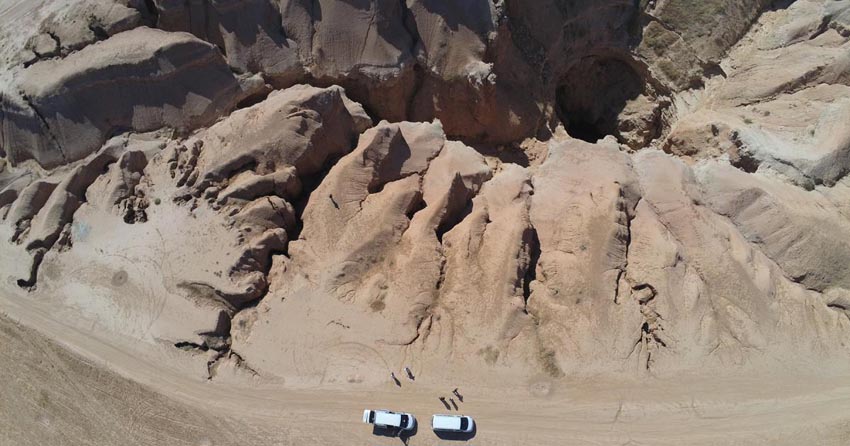
Human Rights Watch released details of a mass grave in Al-Hota gorge in northern Syria, in a report published on May 4. The NGO said that the Islamic state (IS) group was responsible, and called for further investigations into this pit of death, in an interview with FRANCE 24. Photo: © Human Rights Watch
Human Rights Watch released details of a mass grave in Al-Hota gorge in northern Syria, in a report published on May 4. The NGO said that the so-called Islamic State (IS) group was responsible, and called for further investigations into this pit of death, in an interview with FRANCE 24.
Researchers call it the “abyss of horror”. Located 85 kilometres north of Raqqa, the former capital of IS in Syria, was used as a mass grave by the jihadist group that ruled the region from 2013 to 2015, Human Rights Watch revealed.
The NGO investigated the matter from 2014 to 2019, using satellite technology and geological maps, among other devices. It was able to film the bodies of six people, not yet identified, floating in the water at the bottom of the 50-metre-deep pit. But there are clear indications that the number of corpses there is much higher.
Speaking to FRANCE 24, Nadim Houry, co-author of the report, a former director of HRW’s Terrorism/Counter-terrorism programme and now executive director of the Arab Reform Initiative think-tank, looked back on the investigation and the questions it raised.
What led you to investigate the Al-Hota pit?
It all started with a video that was leaked from the Islamic State group and broadcast by Syrian media in June 2014. The footage shows seven masked terrorists hurling the bodies of two men down into the abyss. At the time, the IS group controlled the region and we couldn’t investigate. But I knew the area well – I’d been there in 2013, and even then I was hearing rumours about dead bodies thrown down the gorge. After that, we couldn’t go there until the summer of 2017, when the IS group was driven out in the Battle of Raqqa.
What were the difficulties in investigating?
Well for starters, the pit is hard to get to. It’s a kind of canyon, it’s deserted, it’s a long way from the nearest road. The paths leading to it were littered with mines and explosives. And the abyss is itself is very steep, with a 50 metre drop.
There were other complications. The village of Soulouk is just a five-minute drive away, but its inhabitants were afraid to answer questions. Even though the IS group was losing ground, it still had sleeper cells and members who refused to surrender.
How did technology help your investigation?
Our goal was to film at the bottom of the abyss and drones were the best way to do that. But we had a lot of trouble getting the drones there. The IS group was also using them, so the authorities in Iraqi Kurdistan, which we passed through, took almost a year to give us the green light to use them, lest our drones be hijacked by terrorists.
In September 2018, we were finally able to bring in two French technological devices that work without GPS; this was necessary because firms had been ordered to cut their signals to aid the fight against the IS group. This technology allowed us to see down 50 metres into the abyss. It was an immense challenge. We almost lost a drone that was hit by a flock of birds down in the gorge, but a second drone finally gave us the footage we needed.
What did you discover down there?
The images show six bodies floating on a surface of viscous water – probably pockets of oil. But we couldn’t identify the bodies, nor could we dive under the surface, where there are surely other corpses.
The IS group was no longer in control of the area by this point, in 2018. What made you think it was responsible?
The abyss was probably used as a mass grave by rebel groups both before and after IS controlled the area. In 2018 we informed the Syrian Democratic Forces, a rebel group that had taken control of the region, and they told us about the settling of scores between locals. But we have never been able to substantiate these claims. On the other hand, we do have evidence against the IS group.
Firstly there was the aforementioned video from 2014; and then there are local testimonies and local journalistic investigations. We also know that IS group did the same thing in another abyss in Iraq. It is perhaps a punishment for “impure” people who, according to their jihadist ideology, don’t deserve to be buried. But understanding this practice would require further anthropological investigation.
Why release the report now?
We pushed our technology to the maximum of what we could do. Now we’ve got to continue the investigation – because so far what we’ve discovered raises more questions than answers. We begged the international coalition fighting the IS group, then with the SDF, and now with Turkish troops in control of the area, to ensure that the site is secured as a crime scene. Of course, the answers are out there and it’s imperative that we find them in order to write a complete history of the IS group and to ensure that these crimes don’t happen again.
This report is just part of a bigger Human Rights Watch investigation into the disappearances caused by the Islamic State group. This abyss has a sensationalist aspect; it’s intriguing. It already had a particular fascination for local people: Legend had it that there was a mythical creature in there that kidnapped people. But it’s one mass grave among numerous others. There are at the least 20 in the region and thousands of people have disappeared during the IS group’s reign – Westerners as well as Syrians and Iraqis.
The Syrians were the first to have suffered from the IS group’s atrocities; they’ve lost loved ones, they’ve seen their economy collapse. Giving answers about the fate of missing people would be a way of putting things back in order and helping the country to rebuild. It would allow families to mourn and the country to turn a page in its history.
-

Thai ex-PM Thaksin appears on stand in royal defamation case
2025-07-16 -
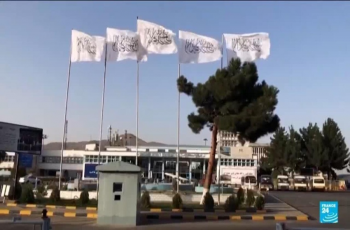
Thousands of Afghans and families brought to UK after data breach
2025-07-16 -
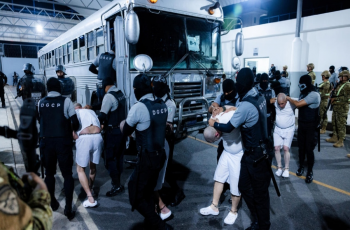
David vs Goliath: Inside the legal battle to help Trump's deportees in El Salvador
2025-07-16 -
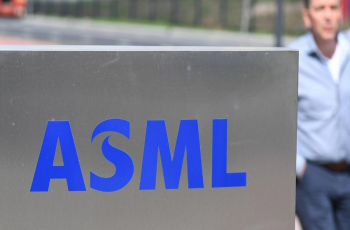
Dutch tech giant ASML sees profits rise but warns on 2026
2025-07-16 -

UN expert on Palestinians says US sanctions are a 'violation' of immunity
2025-07-16 -
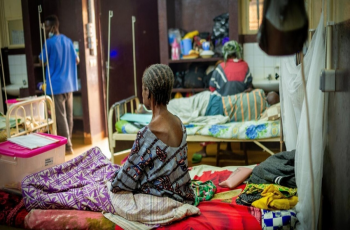
Global health aid sinks to 15-year low in 'era of austerity'
2025-07-16 -

‘I’m scared for my entire generation’: Young Americans reflect on Trump's first 100 days
2025-04-26 -
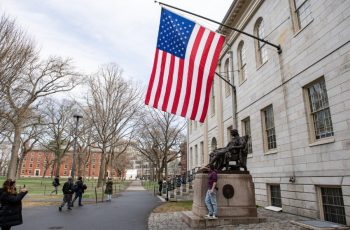
Foreign students give up American dream over Trump crackdown
2025-04-25 -

Don't make 'disappointing' retreat on climate, COP30 CEO urges EU
2025-04-25 -

Kashmir: India-Pakistan tensions rise after attacks on tourists
2025-04-25
